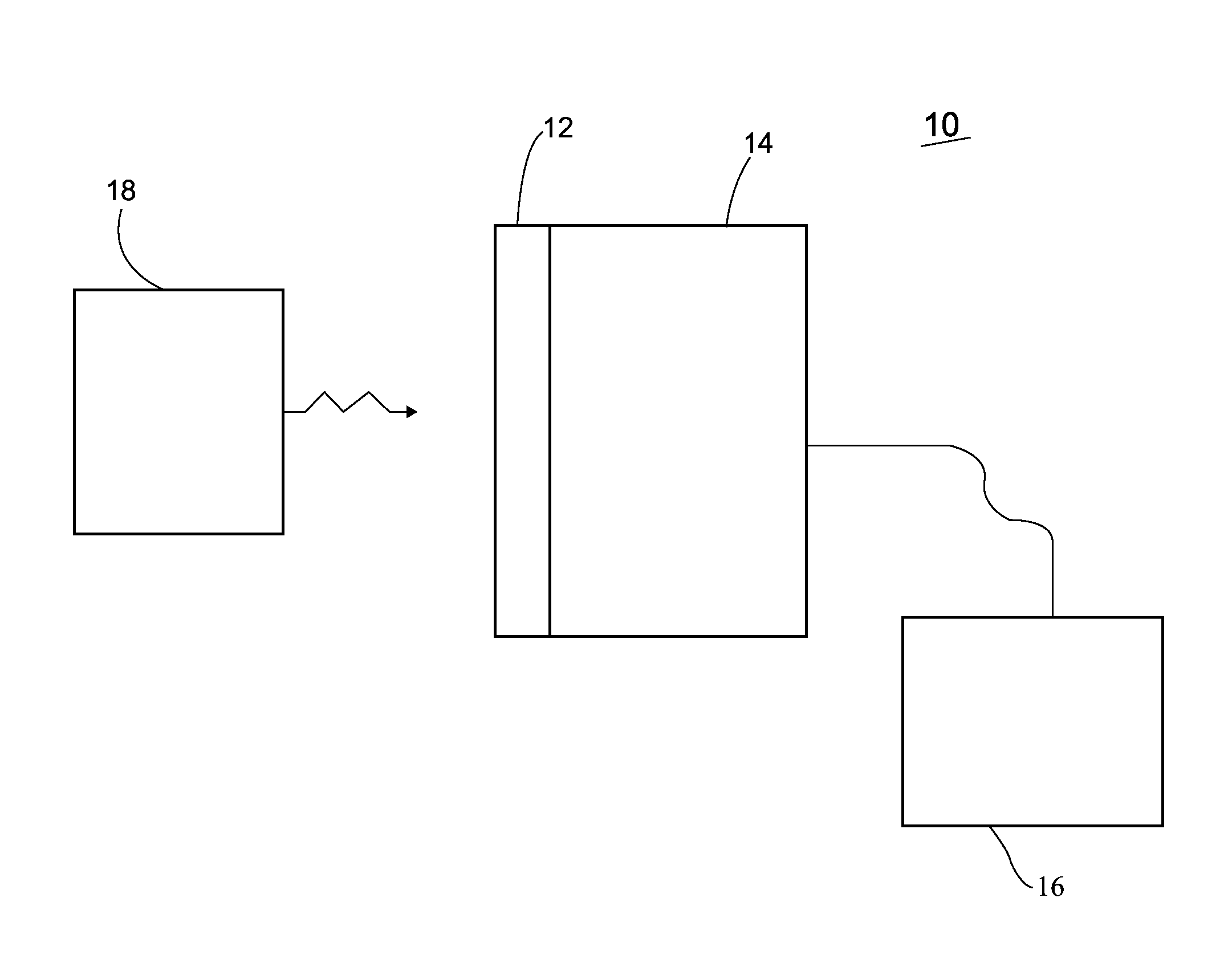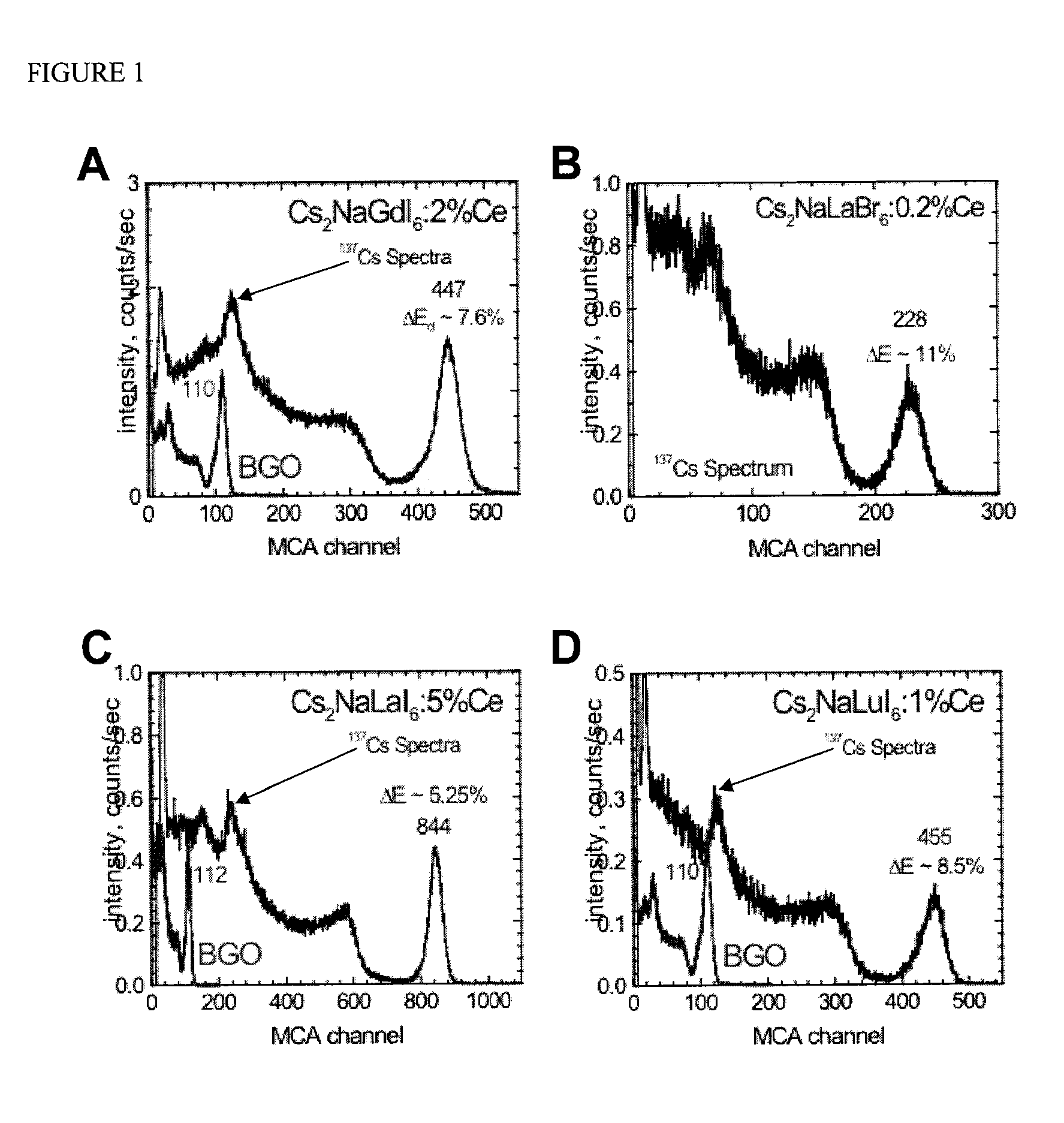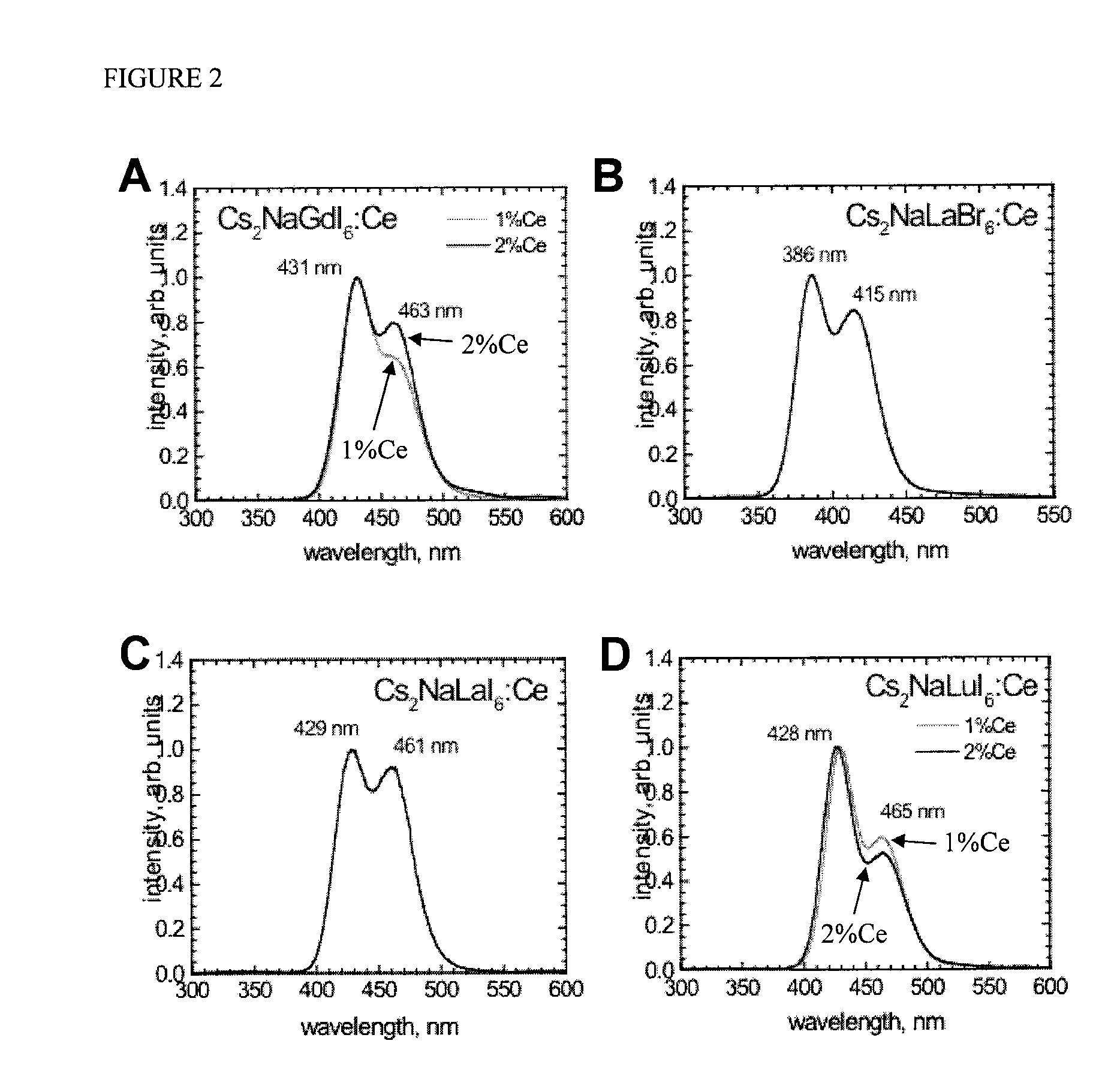Mixed cesium sodium and lithium halide scintillator compositions
a technology of lithium halide and mixture, which is applied in the field of scintillator compositions, can solve the problems that the actual use of scintillator spectrometers and various practical applications has been difficult to predict, and the requirements on the whole cannot be met by many of the commercially available scintillator compositions, and achieves high gamma-ray and neutron stopping efficiency, robust light output, and fast response
- Summary
- Abstract
- Description
- Claims
- Application Information
AI Technical Summary
Benefits of technology
Problems solved by technology
Method used
Image
Examples
example 1
[0051]The present example provides a method for growing and provides characterization for the scintillator composition crystals. The following examples are offered by way of illustration, not by way of limitation.
Crystal Growth of Compounds Exemplified with Cs2NaLaBr6, Cs2NaGdI6, Cs2NaLaI6, and Cs2NaLuI6
[0052]In one example, a one zone Bridgman furnace was used for crystal growth. Typical growth rates for the Bridgman process are about 1-6 mm / hour. Growth rates ranging from about 1 mm / day to about 1 cm / hour may be utilized. The range of rates may be extended to improve material quality.
[0053]Cs2NaLaBr6, Cs2NaGdI6, Cs2NaLaI6, and Cs2NaLuI6 have a cubic crystal structure. The densities of Cs2NaLaBr6, Cs2NaGdI6, Cs2NaLaI6, and Cs2NaLuI6 are between about 3.9 and about 4.6 g / cm3. The compositions melt congruently at approximately 78, 925, 778, and 1050° C., respectively, and therefore their crystals can be grown using melt based methods such as those described by Bridgman and Czochrals...
PUM
 Login to View More
Login to View More Abstract
Description
Claims
Application Information
 Login to View More
Login to View More - R&D
- Intellectual Property
- Life Sciences
- Materials
- Tech Scout
- Unparalleled Data Quality
- Higher Quality Content
- 60% Fewer Hallucinations
Browse by: Latest US Patents, China's latest patents, Technical Efficacy Thesaurus, Application Domain, Technology Topic, Popular Technical Reports.
© 2025 PatSnap. All rights reserved.Legal|Privacy policy|Modern Slavery Act Transparency Statement|Sitemap|About US| Contact US: help@patsnap.com



